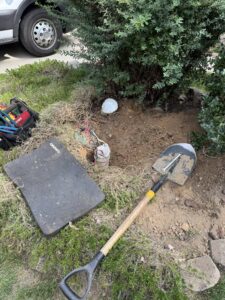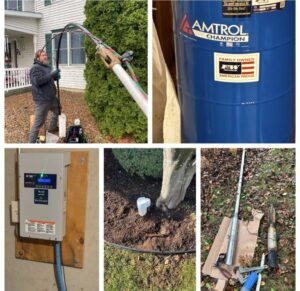Your well pump works tirelessly behind the scenes to ensure you always have fresh water flowing throughout your home. Over time, even the most reliable well pumps experience wear, impacting their efficiency and eventually leading to operational issues. By regularly testing your well pump efficiency, you can detect signs of trouble early and avoid unexpected breakdowns and costly repairs.
Check Your Water Flow Rate
The first and simplest step in testing your well pump’s efficiency is checking the water flow rate in your home. You can do this quickly with nothing more than a five-gallon bucket and a stopwatch. Turn on an outside faucet fully, then time how long it takes to fill the bucket completely. A well-functioning pump should fill a five-gallon bucket in roughly one minute or less. If the bucket fills slowly or the water flow fluctuates noticeably, your well pump may no longer work efficiently. Regularly repeating this test every few months will help you track changes over time and pinpoint any gradual decline in your pump’s performance.
Assess Your Home’s Water Pressure
Consistent water pressure is another crucial sign of an efficient well pump. You deserve powerful showers, steady-flowing faucets, and appliances that run smoothly. If you notice sudden drops in water pressure or inconsistent flow when running multiple faucets or appliances, your well pump might be struggling. Low water pressure not only disrupts your daily routines but also indicates underlying pump problems. Pay close attention to changes in water pressure and address them promptly to avoid further inconvenience.
Monitor Your Energy Bills
Another clear indicator of pump efficiency is your home’s monthly energy usage. A well pump operating at peak efficiency maintains relatively steady energy consumption. If your electricity bills suddenly spike or steadily rise without an obvious cause, your well pump may be drawing excess power due to internal wear or mechanical issues. Monitoring your energy bills each month can help you identify unusual patterns early, providing a clue to the condition of your pump. Staying proactive in this way protects you from unexpected costs and prolongs your pump’s life.
Listen for Unusual Sounds
Efficient well pumps run quietly and smoothly. Therefore, paying attention to unusual noises can help you quickly identify problems. If you hear strange sounds like grinding, rattling, humming, or knocking coming from your well system, it’s a clear sign of trouble. These noises typically point to worn bearings, damaged internal components, or a motor nearing the end of its useful life. Addressing these sounds immediately can prevent more significant damage or sudden pump failure.
Pay Attention to Pump Cycling Frequency
A healthy, efficient well pump turns on and off at regular intervals, supplying water smoothly whenever you need it. Frequent or prolonged cycling can indicate serious efficiency issues. Pumps that cycle repeatedly or run constantly must work harder to maintain adequate water pressure, quickly wearing themselves out. Such patterns place unnecessary strain on the pump, shortening its lifespan and increasing the likelihood of sudden failure.
Know When to Replace Your Well Pump
Even the best-maintained well pumps eventually require replacement. Typically, well pumps last between 10 and 15 years under normal conditions. If your pump consistently shows signs of inefficiency, requires frequent, costly repairs, or reaches this age, it’s probably time for a new one. Investing in a reliable, energy-efficient replacement ensures your home will continue to enjoy uninterrupted access to clean water.
At TLC Well, our expert technicians provide thorough inspections, efficiency testing, and professional well pump replacements. Trust TLC Well to keep your home’s water system performing at its best, giving you peace of mind and comfort for years.
Have more questions?
At TLC Well Service LLC, we provide fast, reliable service to get your well back up and running. Contact us today if you have any questions!




